Long in development to incorporate a raft of distinctive ideas, Vickers Wave took its first flight last month, mere weeks before the launch of Sun ‘n Fun 2022, which kicks off a new flying season.
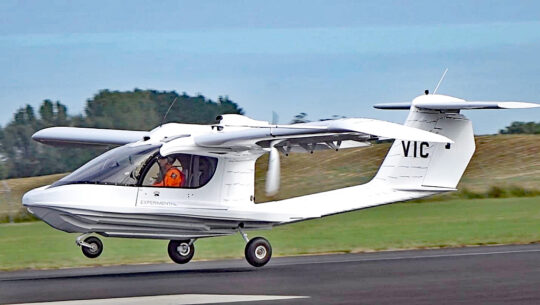
He also said that the methods he followed to get this far would speed production significantly. He means that when this airplane would take its first flight, it would not be some cobbled-together, proof-of-concept aircraft. The Wave that just flew should also go very directly into production without the need for another long round of engineering. Look at the images and the video. This looks like a factory production model, not a crude prototype still rough around the edges.
Satisfying Success!
“It was an incredibly emotional moment for the entire Vickers Aircraft team, a moment more than 11 years in the making,” said Paul after the first flight was concluded. “December 10, 2012, was when I made the decision and began designing the concept, and began turning a dream into reality by spending money. At this point talk became action.”
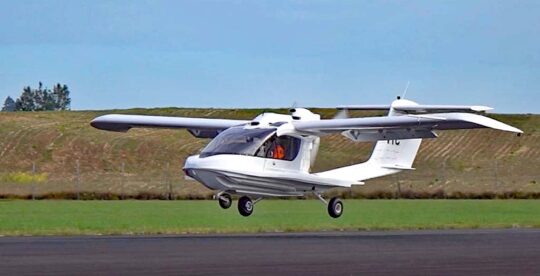
As the Vickers team observed and as the video appears to show, Wave flew well as soon as it got airborne for the first time.
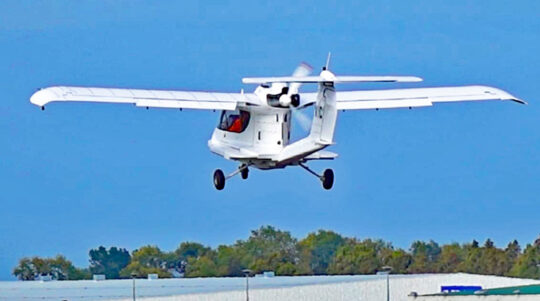
Along the way, Vickers has looked at different engines but the New Zealand group settled on the Rotax 915iS with its potent push of 141 horsepower. A turbo charger also help assure more thrust for a seaplane; getting off the water quicker is always desirable.
“The Rotax 915iS performed incredibly well,” Paul said. “It was smooth and very responsive, coupled with the MT-34 constant speed propellor that is controlled by the RS Flight Systems SLPC (single lever control).
First Flight Notes
“Wave performed as expected,” Paul reported. “The first flight was limited to 85 knots, and we will be further stretching her legs in the coming weeks as we approach our 120-knot cruise speed.”
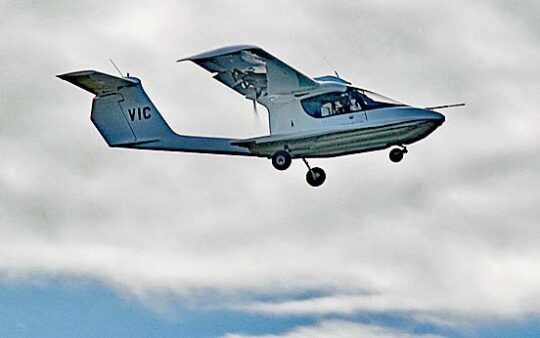
“Dynon stepped up very early in our program and have been an incredible support during the installation and system checks, all of which were seamless,” Paul said. “Dynon Skyview easily integrated into Wave and provided an abundance of information.”
Test Pilot’s Comment — “The Wave felt great to fly. Handling and performance were both impressive. The test points flown worked out as expected or better,” said Prospero “Paco” Uybarreta, a former U.S. Air Force test pilot now the test pilot for Vickers.
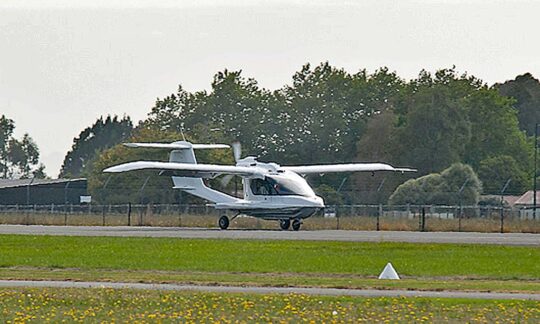
“The design team are well on the way to firming up the remaining areas to be productionized,” finished Paul, “while the production team is looking at increasing capacity and forward ordering required materials.”
Congratulations to the Vickers team for taking the time to get it right and for completing a successful first flight, a momentous achievement for any clean-sheet design such as Wave.
What Makes Wave Different?
In 2018, Vickers Aircraft won a weight exemption of up to 1,850 pounds (839 kilograms), 420 pounds more than a standard LSA Seaplane (at 1,430 pounds or 650 kilograms). Vickers was able to get this allowance as their aircraft has special features that contribute to safety. As these enhancements are above and beyond what other LSA have employed, FAA granted the exemption. Some of the design attributes that convinced FAA include:
Wave Design Distinctions (partial list)
- Wave has a landing gear system (named Cross-Over™, patents pending) that is a fixed gear arrangement for both land and water operations. This landing gear system will eliminate accidents when landing on land with gear up, and landing on water with gear down.
- Wave’s egress doors offer increased occupant safety in the event of the aircraft coming to rest inverted (on land or water).
- Light Sport Aircraft are not allowed to use adjustable propellers so to give the pilot more control of the aircraft on the water, around marinas, and other watercraft, Wave has an electric bow thruster.
- Wave has incorporated an airframe emergency parachute as standard equipment.
- Wave has incorporated an angle of attack (AoA) system to enhance stall awareness.
- Wave has incorporated inflatable airbag restraints.
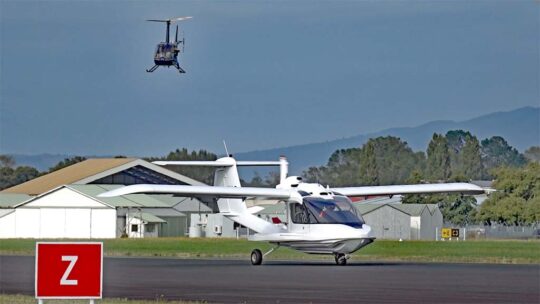
Visitors to Sun ‘n Fun 2022 will not see Wave, but I’ll continue to follow this interesting design and will report its progress to further testing (water trials, for example) and eventually, production.
Following is Vickers Aircraft’s video on the first flight including some good closeups of the machine…
Next is an earlier interview with Paul Vickers where he describes some of his goals.



What is the range of this aircraft?
Please use the links provided to ask the company.
Real nice… but what price segment are they going for? I bet this plane will be close to $200,000. I wonder why they got rid of the 185 horsepower Titan and decided to go with the 915?
Final pricing has not been established yet, but I think you are certainly in the ballpark; this is quite a sophisticated airplane. The Rotax brand is much more widely known than Titan. Since Vickers will sell in other countries beside the U.S., it makes sense to use an engine with global support plus the 915iS has a good power-to-weight ratio.
Dan, thank you for a great review of what looks like an amazing amphibious aircraft! I look forward to any updates that you get over the upcoming weeks/months.
What a beautiful and innovative design. Very impressive!
Sorry have been in composites nearly 65 years; almost certainly this plane has a fatal flaw. The last time I saw one line this on a wonder sailing boat it floundered at the harbour entrance…£5,000,000 up the Swanee.
I don’t understand the “fixed gear” comment for the production aircraft:
quote- “Wave has a landing gear system (named Cross-Over™, patents pending) that is a fixed gear arrangement for both land and water operations. This landing gear system will eliminate accidents when landing on land with gear up, and landing on water with gear down.”
Bill
It is certainly a novel concept, although not entirely unheard of. A center cavity will house the wheelset; it does not need to be retracted. I understand the basic concept and will be very interested to see the final execution.
Very interested in this development. Can it be flown on a RPL licence ?
Although the prop is not presently eligible, under MOSAIC a Sport Pilot should be able to operate an aircraft like Wave.
What’s your opinion on owning an amphibian with no plans for water operation? Why not have that additional functionality if there are no drawbacks – or is there a drawback? I’m assuming similar price points, but my assumption could be wrong.
By no means would you be the only one making such a decision. As water landing sites far outnumber airports, an amphibian has a safety argument.